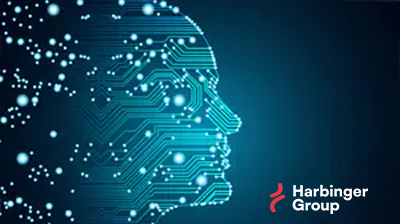
As the saying goes, first impressions last. A new employee’s first weeks in the organization are crucial for acquiring the skills, knowledge, behavior and culture which will help them to become effective and engaged team members. Good onboarding processes allow enterprises to properly integrate new hires in their teams, reduce the ramp-up time to productivity, and encourage long-term retention.
One of the problems that many HR departments face is how to personalize the onboarding process to make it most effective for new hires. People can come from very diverse backgrounds, have a wide range of career paths, and may be looking for different kinds of support from the HR department. A one-size-fits-all onboarding process can be a bad fit for many employees and can actually backfire, leaving new hires with insufficient knowledge or a bad first impression of company processes that will impact their engagement. However, trying to personalize the onboarding process for each new hire can be a complex and tedious task that takes up too much of HR managers’ time.
Using AI to automate and personalize the onboarding process can provide a balance between these two extremes. AI-powered technologies can allow an HR department to customize the onboarding process to each individual employee. They can also make the onboarding process more self-service, allowing new hires to obtain only the information they require, without being overwhelmed. Finally, they can give the new hire the tools to socialize with the right people and build important connections with peers and team members which will positively impact their productivity and engagement.
According to SHRM , there are 4 components of a successful onboarding process
1. Compliance: Rules and regulations
2. Clarification: Role-related expectations and responsibilities
3. Culture: Organization values and norms
4. Connection: Relationships with existing staff, supervisors, and mentors
Evidently, there is a lot of ground to be covered and not all of it can be covered by simply making new hires read a few PDFs. On the other hand, line managers should not be spending too much of their time showing new hires the ropes, because this can impact their own as well as the whole team’s productivity. AI-powered technologies allow enterprises to find innovative solutions to thread the needle and give new employees a timely, sufficient, effective and personalized onboarding experience. Here are some of the ways AI can help with onboarding:
Generating documents for signing: Using natural language processing (NLP), organizations can automatically generate offer letters, contracts and other documents like NDAs with the employees. While these documents can be generated from templates, it is also possible to create a more advanced system that uses unstructured text from email exchanges or IM applications like Slack. While this process cannot be completely automated (A human needs to validate the output and ensure that it is signed properly), it can reduce the amount of time HR managers spend on clerical tasks and thus increase productivity.
FAQ chatbots: Most new hires will have questions about basic processes like applying for PTO, connecting to the office WiFi, or setting up their email account. In addition to giving employees packets which contain this information, a chatbot is a good way to answer FAQs. Chatbots allow new hires to ask for new information when they need it instead of being overwhelmed by everything at once. They help reduce the time it takes for new employees to become productive.
Relationship-building aids: Building relationships with peers and team members is crucial to allow new hires to integrate into the organization, increase productivity and become engaged employees. Using organizational network analysis (ONA), organizations can understand which relationships new employees must cultivate to be productive and introduce new hires to critical points of contact in their team and in the organization.
Feedback analysis: Getting feedback from employees is important for HR professionals to continuously improve the employee experience. AI can provide HR professionals with the tools to understand direct and indirect feedback. Using NLP, HR managers can extract quality insights from large quanitites of textual feedback. This can allow HR managers to understand the major feedback themes, general employee sentiment, and the effectiveness and ease-of-use of HR processes.
The points above are just a snapshot of the kinds of advanced capabilities organizations can unlock using AI. To discover opportunities for leveraging AI in their processes, HR departments must first start by conducting a thorough audit of their processes to discover pain points and bottlenecks. These action points can then be analyzed by data scientists/ML engineers to see if AI/ML technologies can be leveraged to provide a solution.
As the rate of AI adoption increases across industries and talent acquisition continues to remain the biggest problem facing organizations, it is ever more essential to have a coherent AI strategy to address business problems and make processes more efficient. Leveraging AI in onboarding processes can have a wide range of positive impacts on employee experience, engagement, productivity and long-term retention, all of which combine to form a significant competitive advantage for any organization.






